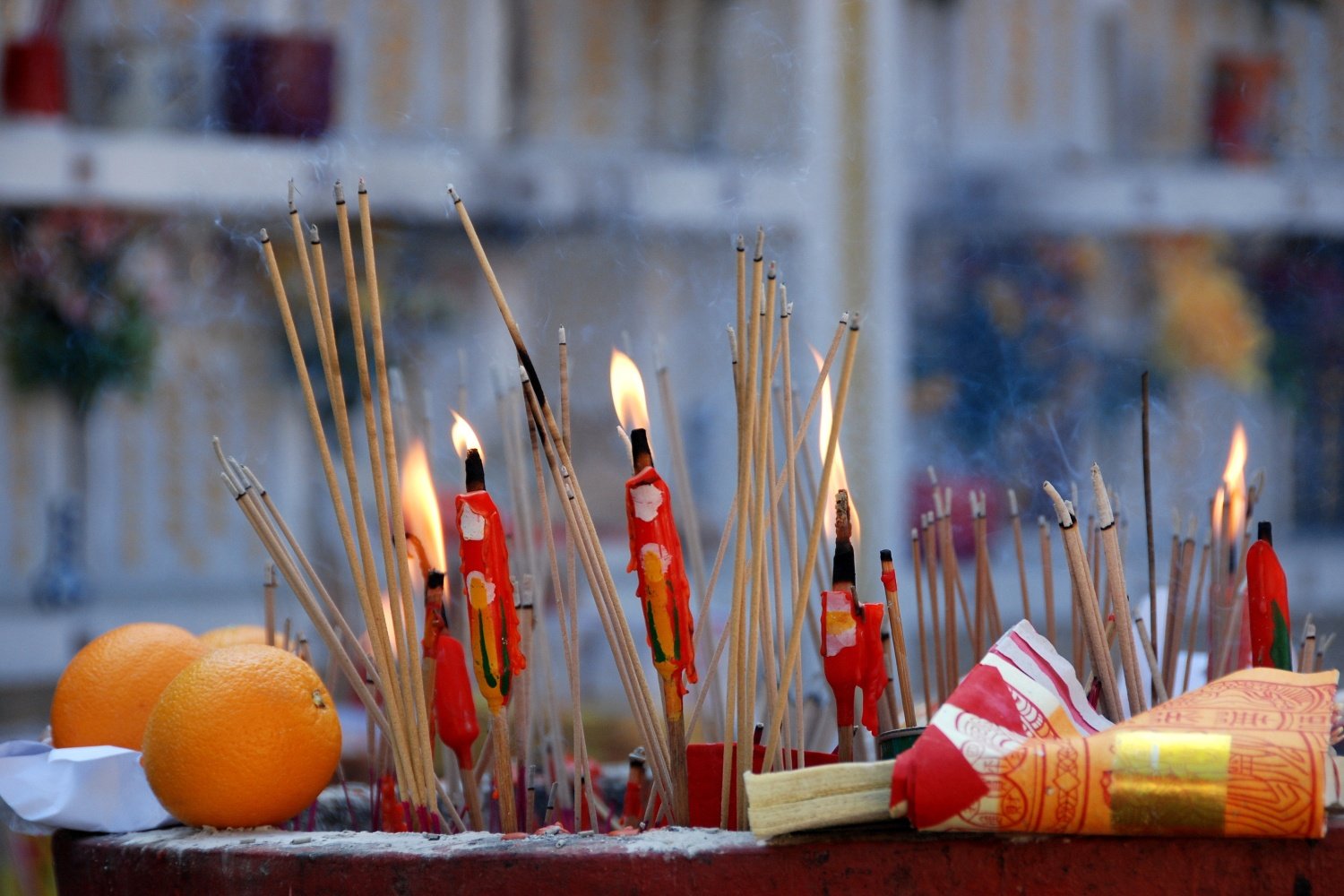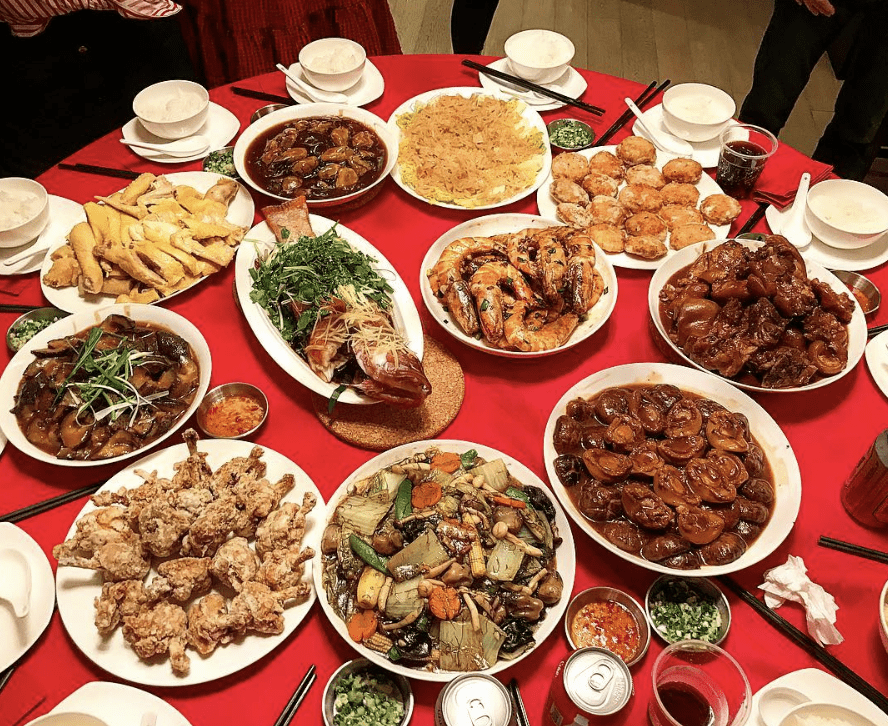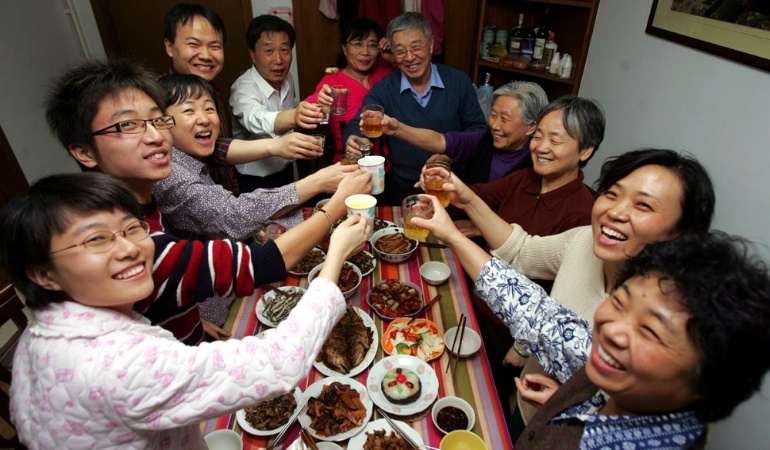Join us as we discover the origins of your favorite (or least favorite) holiday food traditions. This four part series will unwrap the ways these traditions have become integrated into our culture and helped shape our American identities. Read Part I: Hanukkah now.
Food History, Great Reads
Digging Up the Roots of Holiday Traditions: Lunar New Year

For Chinese Americans, Lunar New Year is far more than a holiday represented by swathes of red and gold and dragon dances. It is a time for family members from far and wide to gather over a meal, exchange lucky red envelopes, play games, and welcome in the new year. Its celebration is a touchstone that connects Chinese Americans with their heritage. For many Chinese American children, Lunar New Year is a way to understand the traditions of their parents and ancestors that precede them.
Like so many holidays, its celebration culminates in a feast table laden with plates of foods prepared specially for the day and shared with family. Though this holiday is more than its food, we can use food as a means to understand how and why Lunar New Year continues to be a prominent holiday in America. This year, like last year, festivities will be impacted by COVID-19. Dinners may be more intimate affairs while the rest of the family turns to video to reunite. Some families may be ordering their grand feasts to take home and share, instead of communing at a restaurant banquet hall.

The way people celebrate may be different, but they will not be disrupted and the spirit of the holiday will remain. After a difficult year for so many, Lunar New Year’s focus on preparing for a fresh start while honoring the past amongst family is particularly pertinent.
Celebrations in China and America differ. In China, people get at least a week off for Lunar New Year, meaning their festivities can stretch over a longer period. According to China’s Transport Ministry, 3 billion trips are made both domestically and from abroad to reunite with loved ones. For migrant workers who live abroad to support their families in China, Lunar New Year is often one of the only times they can see their families. Thus making the final New Year’s Eve dinner with the whole family, called 年夜饭 (nian ye fan) or 团年饭 (tuan nian fan), especially meaningful.
In America, Lunar New Year celebrations tend to be confined to a large feast on a single night. This is less because the holiday is unimportant and more so because Chinese Americans do not typically get this day off. Though the feasting and festing is conducted on a much smaller scale it is no less significant. Whether they are in China or America, aunts, uncles, cousins, grandparents, parents, and children still assemble to share New Year’s Eve dinner.
China has a vast and diverse culinary landscape. Some families will eat sticky rice cakes, 年糕 (nian gao), others might eat hotpot, and others might eat sweet boiled rice dumplings stuffed with black sesame paste, 汤圆 (tang yuan). Despite these differences, there are a few dishes that will grace most tables. The most common are dumplings, whole fish, noodles, and whole chicken. Dumplings are eaten because their shape, reminiscent of ancient Chinese gold ingots, represents prosperity. Many families will bond over stuffing and folding a plethora of dumplings together. Another essential dish is fish prepared and served whole. The symbolism of whole fish comes from a common Lunar New Year phrase 年年有余 (nian nian you yu), which means year after year there will be plenty. 余 (yu), meaning surplus, and 鱼 (yu), meaning fish, are homophones. As such, many families will eat whole fish but leave a little leftover, so that they will have abundance in the new year.
Longevity noodles are another common feast item. The extra-long noodles signify long life and good luck. When preparing, be sure that the noodles stay intact as broken noodles represent bad luck symbolizing cutting one’s life short. Whole chicken, roasted or poached, can also frequently be found during feast time. It’s a special food since chicken is typically diced up into smaller pieces in other dishes. Serving a whole chicken represents the reunion of the family, as one chicken can feed a family. There will usually be eight dishes because eight is a lucky number. A bowl of oranges, tangerines, or mandarins will typically be present for snacking between mealtime. Oranges represent good luck, because the word for orange, 句子 (juzi) sounds similar to 吉 (ji) which means luck. As you may be able to tell all if not most of the foods laid out are not only delicious but symbolic too.

Through traditions like multi-course Lunar New Year dinners, Chinese American parents teach their children the importance of family time. For the children of Chinese immigrants, Lunar New Year is a way of feeling rooted to the traditions and culture of their or their parent’s homeland. Katie Lu, Contributor for YR Media, writes, “Like the prototypical early Chinese immigrant, I cannot truly root into the American fabric. Still, this Chinese New Year, I think I will feel differently than I have before: I will be connected to something else, equally as Chinese in spirit as the festival.” America may be home now, or for the children of immigrants, may have always been their home — but that does not mean that they need to cast off the Chinese aspects of their Chinese American identity. Celebrating Lunar New Year is one way of expressing that identity.
Although traditions vary, the Lunar New Year remains an important time for family to gather and bond over delicious food. It is also a time to remember those who came before and take pride in Chinese culture, especially as anti-Asian sentiment has risen as a result of the pandemic. It is an opportunity to pause our ever busier lives and make time for our loved ones.
Many holidays like Lunar New Year are food-focused because making and sharing food is one of the most special expressions of love. Each dish, from the poached chicken served with a ginger and soy sauce to the hand-folded dumplings takes time and effort to prepare, are created to nourish the body and heart. It all pays off to be able to chat and laugh with family as everyone gathers to welcome prosperity and good luck in the new year. So as I bring this holiday food series to a close, I hope I have left you with some food for thought and plenty to chew over.

Images:
-
Header: Tenement Museum collections
-
Incense photo by Getty Images/Flickr Open
-
Dinner spread, Photo Credit: @civic_jay via Instagram
-
Reunion meal, chineseamericanfamily.com
Sources:
- Cheung, Grace. “At Chinese New Year, Every Family Has a Tradition.” KQED, February 4, 2019.
- Chow, Kat. “My Menu For Lunar New Year: Guilt, Confusion, With A Side Of Angst.” NPR.org, January 17, 2017.
- Chung, Jen. “Lunar New Year Eats: Auspicious Foods To Eat In The Year Of The Rat.” Gothamist, January 24, 2020.
- Coffey, Helen. “World’s Biggest Mass Migration Begins as China Prepares to Mark New Year.” The Independent, April 29, 2020.
- Compton, Natalie. “Dumplings, Noodles and Red Envelopes: How 5 Chefs from around the World Celebrate the Lunar New Year.” Washington Post, January 23, 2020.
- Gallary, Christine. “How I’m Creating My Own Lunar New Year Traditions.” Kitchn, January 24, 2020.
- Inside Edition. “How Do Some Asian Americans Celebrate Chinese New Year?” www.youtube.com. YouTube, January 22, 2020.
- Li, Wendy. “A Chinese-American New Year.” Undergraduate Student Blog (blog), February 21, 2015.
- Lu, Katie. “Between Two Worlds for Chinese New Year.” YR Media, January 22, 2020.
- Parkinson, Rhonda. “Chinese New Year Recipes.” The Spruce Eats, January 21, 2020.
- Sangalang, Janelle. “Q&A: How Do Chinese American Students Celebrate Lunar New Year?” Pacific Ties. UCLA, February 21, 2016.
- Xi, Amanda. “Chinese New Year 2019.” Chinese New Year. Wasai LLC, 2018.
- Zhang, Christine. “Foods for a Chinese New Year Feast.” Los Angeles Times, January 21, 2017.